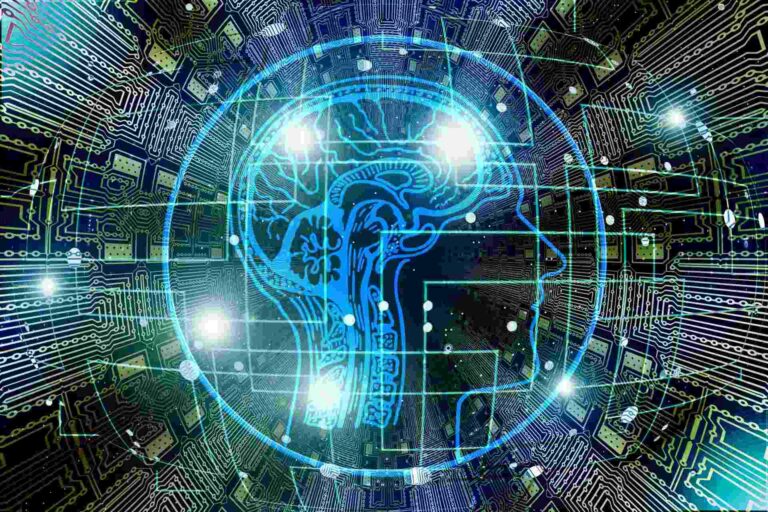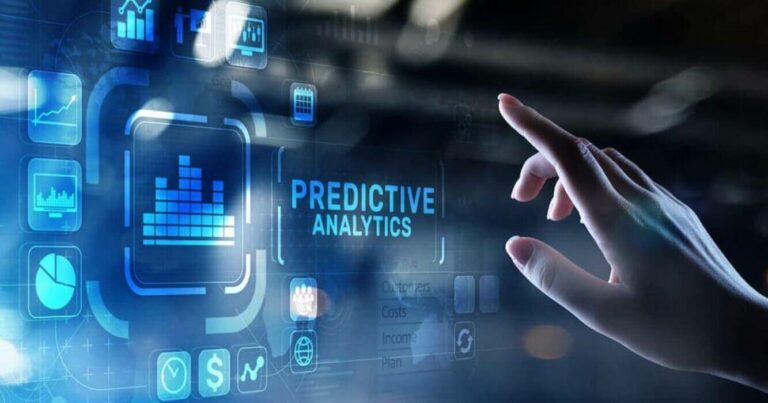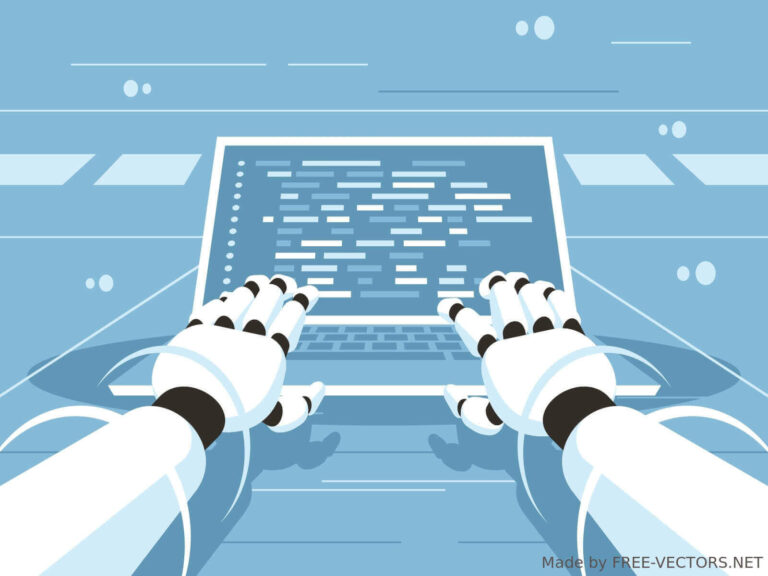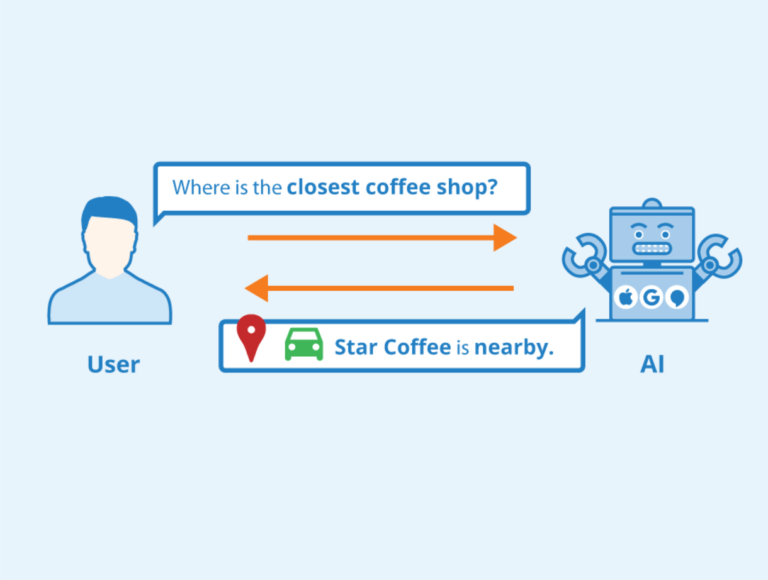Datafication & AI: Important details and insight

The digital age has turned data into a new asset class that can make or break corporations, and the process of its management is called datafication.
Datafication has earned billions of dollars for numerous organizations and their founders and equally wrecked those that refused to datafy.
Coupled with artificial intelligence, datafication offers a unique tool to transform industries, reshape business and customer interactions, and boost profits where none might have previously seemed not to exist.
This blog explores the synergy between datafication and AI, throwing light on the different opportunities and business innovations they could birth.
What Is Datafication?
Datafication is the process of collecting, analyzing, and utilizing data that is generated from various sources, for making informed business decisions. Datafication can help transform any business by breaking down the different parts of its operation into quantifiable information that can subsequently be tracked, monitored, and analyzed. This process naturally leads to improvements in products and services.
The datafication philosophy rests on the understanding of information as an asset – because a company can easily gain economic advantage by making use of information available to it. Thus, many Free and Freemium services exist today thanks to the economic benefits of datafication.
The Benefits Of Datafication
There are many benefits to datafication of a business with AI, which will lead to improved efficiency, productivity, and profits for the company. Here are some of these benefits.
- Understanding Customers: Analytics will give you deep insights into your customers, their behaviors, desires, and preferences. So, datafication is a must for any customer-centric business.
- Researching Trends: Analyzing data from your business will show you where things are headed. You can discover trends, research those trends, and discover insights that can enable your business to profitably join the bandwagon.
- Insights: Running data analysis from time to time can provide you with valuable information that you never expected, and which could transform your business and fortunes.
- Boost Efficiency: Data-driven insights often lead enterprises to become more efficient as they switch to more productive processes or reduce wasteful ones. This can also include automation.
- Reduce Costs: Insights and patterns from datafication can help you to cut operational costs, which is a plus.
- Focus With 80/20: Datafication can expose all the uneven systems and use of resources in a company, helping the organization to realign its focus and boost productivity.
- Predictive Analytics: AI datafication can use a company’s historical data to predict future trends, and such insight leads to better industry focus and investments for better returns.
The Role Of AI in Datafication
While data analysis has traditionally been a manual affair conducted by analysts, the introduction of artificial intelligence makes the job easier and allows smaller startups to afford higher levels of business intelligence that have otherwise been reserved for the privileged.
The following are AI’s key roles/benefits to datafication.
- Quickly Extract Intelligence: From patterns to trends and all types of insights, AI can quickly pull them from large datasets – much faster than any human data analyst can go.
- Improved Decision-making: Having a fast and relatively reliable source of business intelligence will enable any team or enterprise to take the right steps quickly and decisively.
- Enhanced Efficiency: AI enables any organization to mine more data cheaply, thereby boosting operational efficiency by reducing human effort, time, and energy.
- Automation of Tasks: The beauty of integrating AI into a company’s datafication process is that full automation becomes easier since most of the work has already been done. All you then need are a few rules to determine conditions that should trigger automated processes, and that’s it.
Popular Sources Of Data
Data for your datafication purposes can come from any source, so long as it is reliable. Your ideal source will depend on your type of business and what you intend to accomplish. Here are some popular sources.
- IoT Devices & Sensors: This can include Internet of Things devices that are directly connected to the web or ordinary sensors that the company can harvest information from in other ways.
- Social Media: Customer-centric companies can gain a lot of insight by harvesting as much data as possible from social media interactions.
- E-commerce: All e-commerce platforms are a behavioral goldmine for companies willing to mine the data.
- Mobile Apps: Free and premium mobile apps can harvest lots of information about their users that developers can use in many innovative ways.
- Web Analytics: Even seemingly ordinary websites can produce lots of meaningful data when properly tracked with tools like Google Analytics.
- Medical Devices: Medical records, electronic gadgets, and everything else that picks up medical data can be good data sources.
- Financial Transactions: Companies that provide financial infrastructure usually mine their vast troves of financial records for a wide range of customer, fraud, and optimization information.
- Warehouse & Supply Chains: By monitoring each level of their supply chains and warehouses, companies can produce enough data to streamline their operations for good.
- Public & Private Databases: From flat files to MySQL, MariaDB, and dedicated databases in various local and cloud deployments, every organized information source is a good data source.
- Government Records: Self-explanatory.
- Surveillance Systems: Both images and video data can be mined by AI.
Application Fields Of Datafication & AI
Data can theoretically be leveraged to improve any organization’s offering in any market. However, here are the industries where datafication and AI are already being applied successfully.
- Manufacturing
- Banking and Finance
- Healthcare
- Robotics
- Agriculture
- Personalized learning systems
- Personalized recommendations of products and services
- Ride-sharing systems like Uber and Lyft
- Navigation using GPS & related technologies
- Retail and sales
- Insurance systems
- Human resources and work matching
- Autonomous vehicles
- Predictive maintenance of machines
- Fraud detection
- Search engines and ranking
Considerations & Challenges
There are challenges and issues to be considered with datafication and artificial intelligence projects. The following are some of the major ones.
- Complexity: The management of data and the use of AI to analyze it can be a complex affair, often requiring trained or experienced personnel.
- Algorithmic Bias: AI models can be prejudiced when they are trained with one-sided data. For instance, training a robot model with only Caucasian faces. Of course, it will have issues with Asian and African faces.
- Computing Resources: Datafication with AI can require high computing resources if you are running big operations.
- Data Quality: Garbage in, garbage out always holds. No matter how good an AI model is, the input you feed it determines the results you get from it.
- Security Challenges: AI models can be susceptible to attacks. Plus, there are also data privacy and related risks to consider.
- Regulatory Compliance: If you are going to mine information from your users, then you better be aware of the data protection laws and regulations in the relevant jurisdictions.
- Unintended Consequences: AI models can initiate actions that may later have unintended consequences or only become apparent when it’s too late. Who shoulders the blame?
- Job Displacement: Automating datafication with artificial intelligence naturally leads to a disruption of the workforce. Although the results of datafication might equally increase demand for new skilled workers.
How To Datafy Your Organization
Datafying your organization is an ongoing process that simply needs you to take steps in the right direction. But as is evidenced by many companies out there, there are no strict rules to datafication. Here are some of the steps that you will need to take though.
- Invest in data Infrastructure, including hardware, software, sensors, and IoT devices.
- Collect & store data from as many sources as possible.
- Establish a data-driven culture in your enterprise by defining how you will use information for work.
- Put policies in place to ensure the quality of the data you collect.
- Integrate data from as many systems and departments as possible by centralizing your data warehousing.
- Foster collaboration between data scientists and the rest of the organization.
- Start small with an easy project, then expand your datafication as you gain more experience.
How To Conduct AI Data Analysis
After your organization’s datafication, you can conduct an AI analysis of your company’s data using the following steps.
- Define Objectives: You first need to know what type of insights, results, or patterns you are hoping to get from the process. These need to align with your business needs too.
- Choose AI Approach: You will also need to choose the right AI discipline that can help you to achieve your goals. For instance, natural language processing, a machine learning algorithm, or a deep learning model.
- Collect & Clean Data: Here you need to organize all your data from different sources and have them pre-processed and ready for use.
- Train A Custom Model Or Use A Prebuilt One: Some AI analysis tools come with pre-trained models that you can use right away. Otherwise, you will have to first train a model or fine-tune an already trained one using most of the data you collected.
- Validate & Refine Model: After training, you need to evaluate your model’s quality of extracting insights, identifying patterns, and predictions to see if it’s okay with you or if it needs further training.
- Analyze & Visualization: If all goes well, then you can now make your analysis and publish results with good visualizations to help chart the course of your enterprise. Those seeking to automate processes can take things further from here.
List of Top AI Data Analysis Tools
- Tableau
- RapidMiner
- KNIME
- PyTorch
- H2O.ai
- MonkeyLearn
- Google Cloud AutoML
- Google Colab
- DataRobot
- Microsoft Power BI
- Akkio
- Polymer
Companies Using Datafication & AI
Many companies from around the world already employ datafication and artificial intelligence to gain an edge over their competition or for other purposes. Following is a short list of some of these major companies and how they are applying the technologies.
- Google: Google massively applies datafication and AI algorithms for many tasks, including search engine ranking, image recognition, ad targeting, and natural language processing.
- Amazon: This retail giant uses them for product recommendations and supply-chain optimization, among others.
- Facebook: From personalized feeds to ad targeting and image recognition, Facebook is not left out from datafication with AI.
- Netflix: Data about users’ preferences and behavior are mined to create personalized recommendations for movies and TV shows. Plus the company equally uses them to predict demand for its original content productions.
- Uber: Route recommendations rely on AI and data to work well. As well as to optimize pricing.
- Tesla: Tesla’s self-driving cars rely on live data from the car’s environments to make driving decisions and navigate the streets.
- Airbnb: From search results to personalized recommendations, and fraud detection, Airbnb equally utilizes datafication with AI strategies.
Frequently Asked Questions
Here are some frequently asked questions regarding business datafication with artificial intelligence.
Q: How do datafication & AI work together?
A: Datafication is the process that provides a large volume of data for the company to mine for insights, while AI finds patterns and trends from the data.
Q: What are some datafication and AI applications?
A: Their applications include search engines, supply chains, personalized recommendations, task automation, manufacturing, and many more.
Q: Will datafication and AI take over human jobs?
A: Yes and no. Yes, because it reduces the need for more manual work by humans, leading to fewer data-related positions. And no, because it equally creates more work opportunities in companies.
Q: Is datafication a threat to individual privacy?
A: This depends on the company collecting the data and what they are using it for. Many jurisdictions have data privacy laws to protect users anyway.
Conclusion
Rounding up, you have seen how the synergy of datafication and artificial intelligence algorithms is helping to disrupt industries online and around the world from digital payments to search engines, manufacturing, predictive maintenance, and self-driving vehicles.
Surely, this trend isn’t going away anytime soon. So, your company better be doing it already or it’s best to start now.





